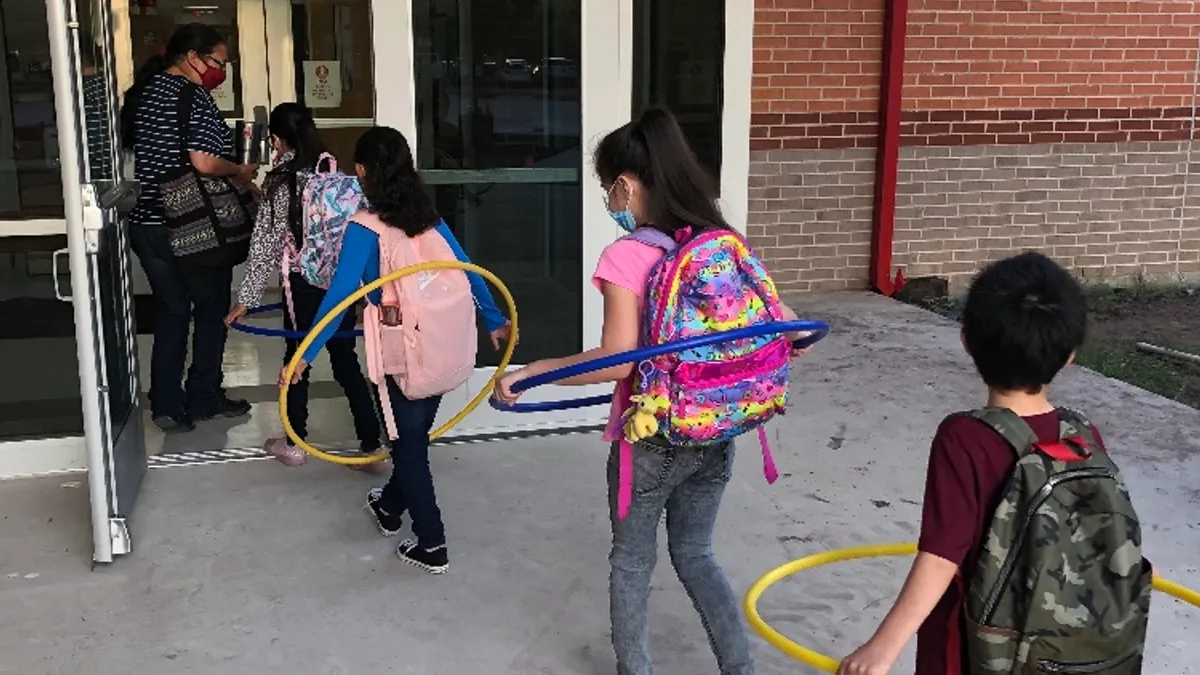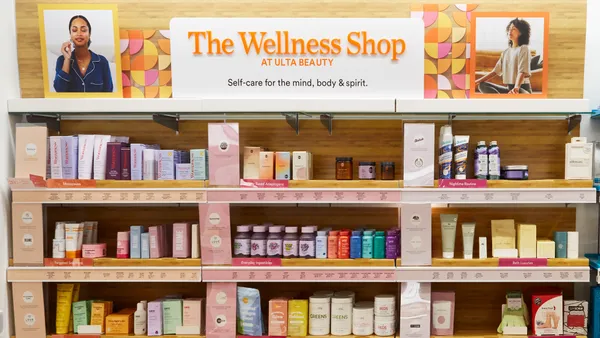Dive Brief:
-
This year's back-to-school spending will be flat year over year at $28.1 billion, or $529 per household, according to Deloitte's back-to-school surveys. Households expect to spend $1,345 on average for back-to-college shoppers.
-
Ongoing worries about the COVID-19 outbreak have back-to-school shoppers expecting retailers to offer not only good prices and convenience but also safety, according to the reports, which were emailed to Retail Dive.
-
Some 37% of back-to-school budgets is going online, up from 29% last year. Half of those shoppers want buy online, pick up in-store options, up from 36%. Staying at home is a blow to mobile, though, as 64% will shop from their computers, up from 42% in 2019. In all, some $12.2 billion will be spent in store, $10.4 billion online, with $5.5 billion still up in the air, according to Deloitte.
Dive Insight:
The ongoing COVID-19 pandemic is disrupting the important back-to-school shopping season as parents apply lessons from several weeks of virtual learning in the spring to an uncertain new school year in the fall, according to Deloitte's 2020 back-to-school surveys.
Schools are planning their return now, with some welcoming back students as early as next month. While there has been pressure this week from the Trump administration to return as normal, most schools are mulling at least some level of virtual learning to make it easier for teachers and students to maintain the physical distances necessary to help stem the contagion.
Traditionally, heading back to school presents a crisp transition to fall and a new year, but that has been roiled this year, according to Rod Sides, vice chairman, Deloitte LLP, and U.S. retail, wholesale and distribution leader.
"With school formats still up in the air for many, the spend is shifting to tech as parents anticipate the possibility of remote learning and the need to supplement students' education," he said in a statement. "Retailers that can stay nimble and react quickly to changing needs for education amid the challenges of COVID-19, will likely be the ones that will have an opportunity to appeal shoppers this season."
When it comes to college-age kids, financial worries (affecting 40%) join health concerns (72%) in causing 62% of those parents to feel anxiety, and some to "rethink plans for the fall," Deloitte said. On average, parents expect to spend $1,345 for back-to-college, but higher income households will spend 6% more, while middle-income families will spend 12% less and lower-income families 4% less.
Despite all the unpredictability, the timing of the shopping is intact, with 80% planning to shop in late July or early August as usual, Deloitte said.
The task is fraught with anxiety, however, and that is leading consumers to alter some other patterns. Just over three-quarters of consumers say that health concerns lead them to "seek retailers taking COVID-19 precautions" and shop online, according to the report. Safety concerns have joined mainstays price and convenience as major draws for 59% of back-to-school consumers.
The category mix is also different this year, with 40% of parents expecting to buy fewer traditional school supplies in favor of technology, up from 30% in 2019, reflecting a concern of a little more than half of parents that their kids need the right tools for virtual learning. Year over year, tech spending is up 28%, apparel is down 17% and traditional supplies is down 18%. Perhaps also because more people are at home these days, children's influence on computer and electronics purchases is up to 69%, from 54% in 2019.
Consumers are also adjusting where they will shop, at least to some extent. Most (81%) by far plan to turn to mass merchants, but that's down from 88% last year. Specialty retailers, fast-fashion retailers, off-pricers and consignment shops are all set to see fewer back-to-school shoppers this year, with warehouse clubs, drugstores, grocery stores, bookstores and catalogs catering to more of them. Department stores and electronics stores will enjoy about the same level, Deloitte found.














